
As someone who loves to indulge in delicious food, I have a soft spot for all-you-can-eat Korean BBQ and yakiniku restaurants. However, there are subtle, and not so subtle, differences between the two styles of grilling meat.
When it comes to taste, there is no denying the differences between Korean BBQ and yakiniku. Korean BBQ typically features beef brisket, chicken, and marinated bulgogi. Yakiniku, on the other hand, often includes beef loin/chuck, beef tongue, and vegetables grilled on the spot. One key indicator of Korean BBQ is the absence of vegetables on the grill. While both styles of cuisine are delicious, they offer unique flavor profiles and dining experiences.
While there is debate over the origins of yakiniku, many historians argue that it was actually derived from Korean barbecue. Some say that yakiniku was a post-war meal, while others suggest that it was created by Korean natives living in Japan. Regardless of its origins, yakiniku has become a popular dining experience in Japan, and is now enjoyed worldwide.
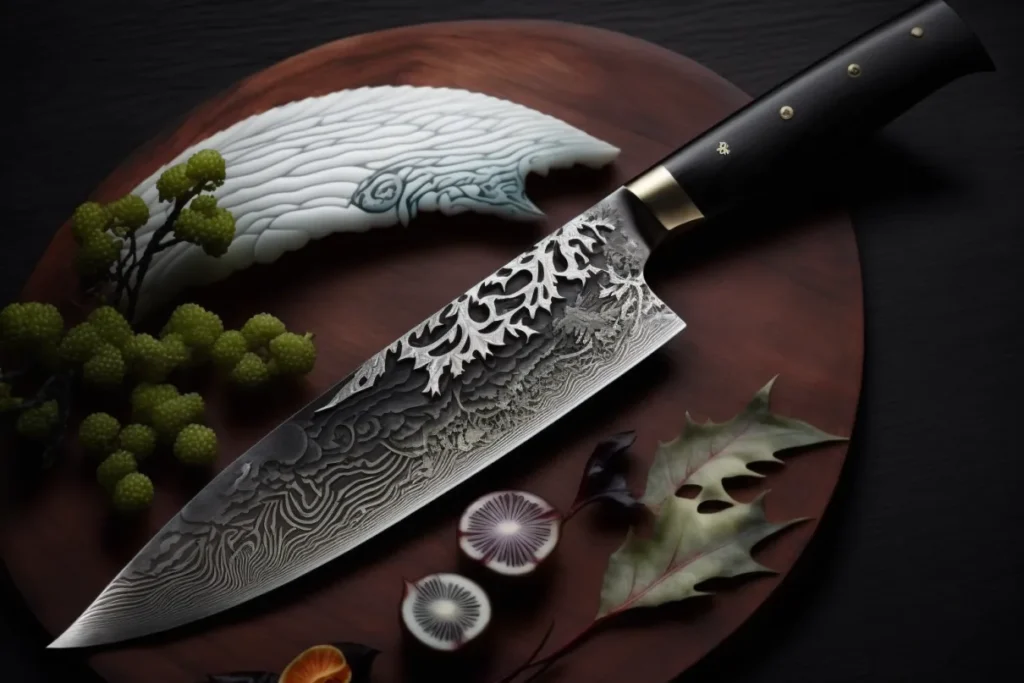
If you’re a fan of Korean BBQ, you might also enjoy trying out its close cousin, galbi. Galbi is a Korean dish that consists of marinated beef short ribs that are grilled to perfection. The marinade is typically a combination of soy sauce, sugar, garlic, and sesame oil, giving the meat a rich and savory flavor.
Similarly, if you enjoy yakiniku, you might want to explore the world of Korean bulgogi. Bulgogi is thinly sliced beef that is marinated in a sweet and savory sauce, often made with soy sauce, sugar, garlic, and sesame oil. It can be grilled or stir-fried, and is typically served with rice and vegetables.
Splitting Hairs: The Differences
For many, Yakiniku and Korean BBQ are interchangeable terms, but this couldn’t be further from the truth. Yakiniku is a Japanese word that means “grilled meat,” while Korean BBQ is a cooking method that has been popularized in Korean cuisine. Although both cuisines involve grilling meat, the techniques, ingredients, and presentation differ greatly. Understanding the differences between Yakiniku and Korean BBQ will give you a deeper appreciation for each cuisine and enhance your dining experience.
The History of Yakiniku and Korean BBQ
The origins of Yakiniku are debated among historians, but some argue that it was derived from Korean BBQ. Others say that it’s a post-war meal, while some claim that it was created by Korean natives living in Japan. On the other hand, Korean BBQ has its roots in ancient Korean culture and was influenced by the Mongolian and Chinese cuisines. Regardless of their origins, both Yakiniku and Korean BBQ have evolved over time, with unique regional variations.

Key Differences: Yakiniku and Korean Barbeque
One of the most noticeable differences between Yakiniku and Korean BBQ is the meat cuts and types used. Yakiniku usually features cuts of beef loin or chuck, beef tongue, and vegetables, while Korean BBQ includes beef brisket, chicken, and marinated bulgogi. Another difference is in the flavor profiles. Yakiniku typically uses salt and soy sauce-based marinades, while Korean BBQ is known for its spicy and sweet marinades. Additionally, Yakiniku is usually cooked by the diners themselves on tabletop grills, while Korean BBQ is usually cooked by the chef and served on a communal grill.
Similar Dishes to Korean BBQ and Yakiniku
If you enjoy Yakiniku, you might also like Galbi, a Korean dish that’s similar in style and presentation. Galbi is marinated short ribs that are grilled and often served with lettuce leaves and a variety of side dishes. Similarly, if you’re a fan of Korean BBQ, you might enjoy Bulgogi, a Korean dish that’s similar in flavor and cooking style. Bulgogi is thinly sliced beef that’s marinated in a sweet and savory sauce and grilled to perfection.
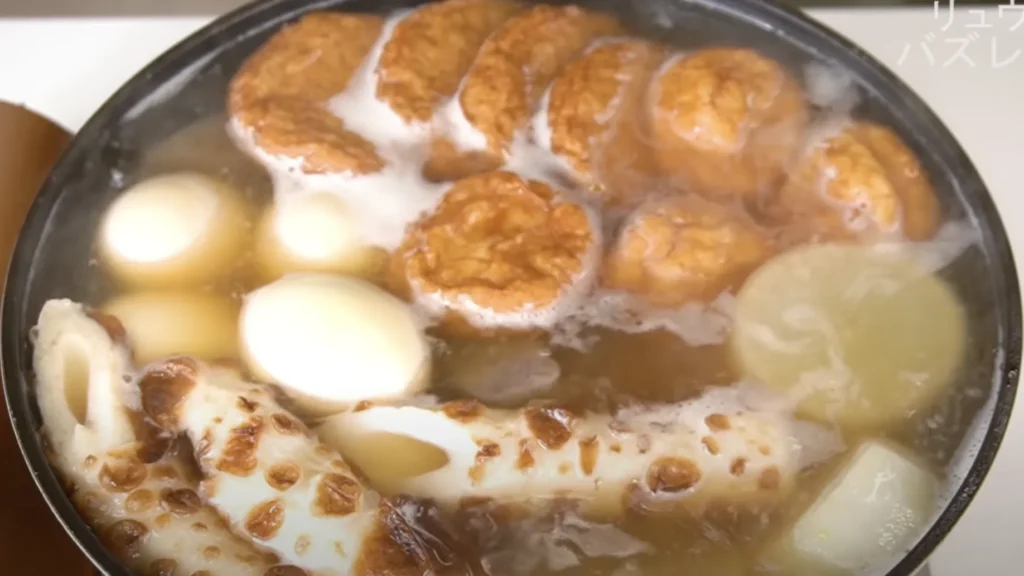
What is Yakiniku?
Yakiniku is a Japanese-style barbecue that originated in Japan and is now popular all over the world. In Japanese, yakiniku means grilled meat, which is the foundation of this meal. Unlike Korean BBQ, yakiniku typically involves small pieces of meat or offal that are grilled over charcoal or gas flames. The cuts of meat used in yakiniku are typically leaner and sliced thinner than those used in Korean BBQ. Yakiniku also often includes vegetables, such as mushrooms, onions, and peppers, that are grilled alongside the meat.
Check here for a more in-depth article about What is Yakiniku?
History of Yakiniku
The history of yakiniku is a topic of debate among historians. Some argue that it was derived from Korean barbecue, while others suggest that it is a post-war meal that originated in Japan. There are even some who claim that yakiniku was created by the Korean natives living in Japan. Regardless of its origins, yakiniku has become an integral part of Japanese cuisine and culture, and its popularity continues to grow worldwide.

Types of Meat Used in Yakiniku
One of the defining features of yakiniku is the variety of meats used. While Korean BBQ typically focuses on beef, pork, and chicken, yakiniku can include a wider variety of meats and offal, such as beef tongue, beef liver, and pork belly. Some yakiniku restaurants even offer exotic meats like horse, ostrich, or even alligator. The cuts of meat used in yakiniku are typically leaner and sliced thinner than those used in Korean BBQ, which allows them to cook quickly over high heat.
Yakiniku Sauce
Another essential element of yakiniku is the sauce used for dipping. The sauce is often made from soy sauce, sugar, sake, and mirin, and may include additional ingredients such as garlic, ginger, or sesame oil. Some restaurants may offer several different types of sauce for customers to choose from, ranging from sweet and mild to spicy and tangy. The sauce adds flavor and depth to the meat and is an essential part of the yakiniku experience.
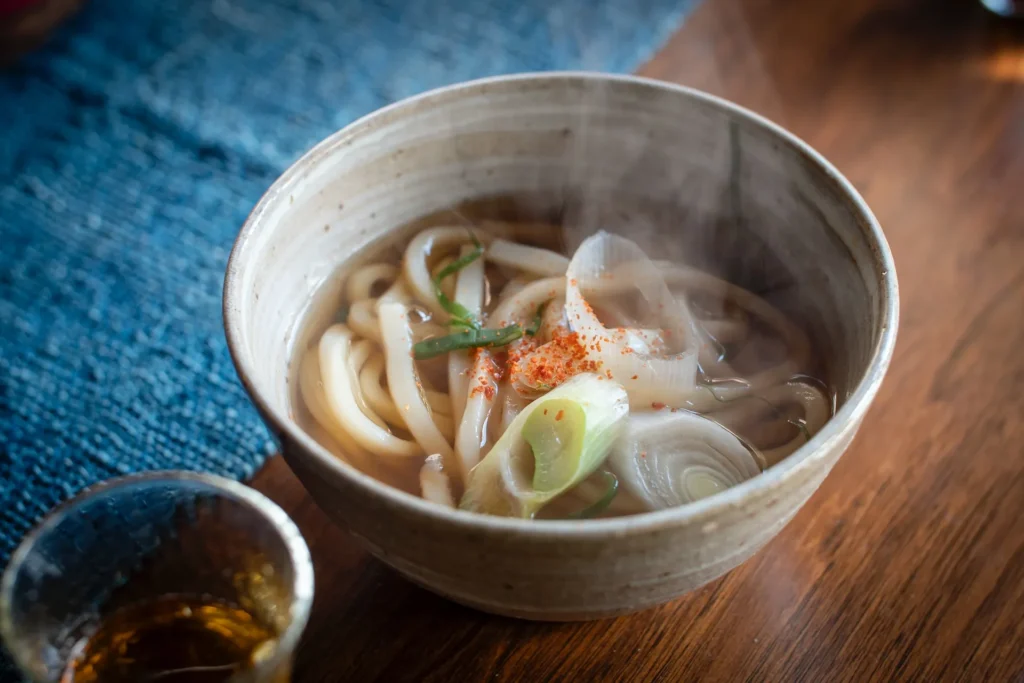
Flavor Profiles of Yakiniku and Korean BBQ
While both Yakiniku and Korean BBQ are grilled meats, they differ greatly in terms of flavor profiles. Yakiniku is a Japanese-style barbecue that is characterized by the use of soy sauce-based marinades and dipping sauces. The marinades and sauces are carefully crafted to complement the natural flavor of the meat. On the other hand, Korean BBQ is known for its bold, spicy, and savory flavors. The meat is often marinated in a mixture of soy sauce, garlic, sugar, sesame oil, and other spices, giving it a distinctive and robust flavor that is sure to tantalize the taste buds.
Cuts of Meat
Another key difference between Yakiniku and Korean BBQ is the types of meat that are typically used. Yakiniku is traditionally made with cuts of beef such as sirloin, tongue, and short ribs, as well as pork, chicken, and seafood. Korean BBQ, on the other hand, is best known for its use of beef brisket, galbi (short ribs), bulgogi (marinated beef), and pork belly. While both styles of barbecue offer a range of meat options, the specific cuts used in each cuisine contribute to their distinct flavors.
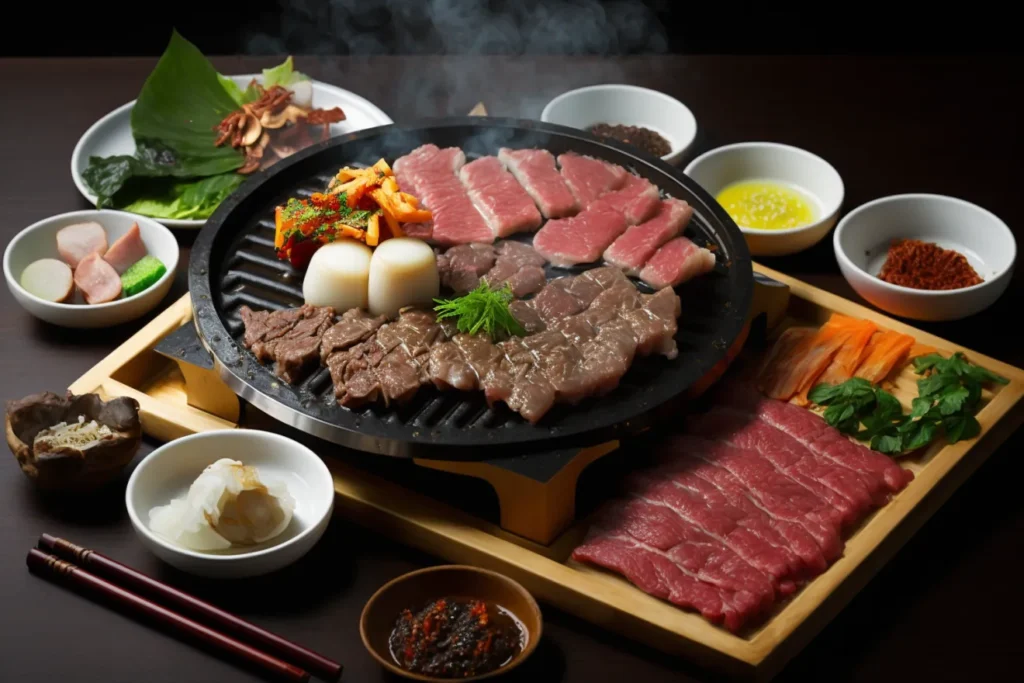
Cooking Method and Style Differences
Yakiniku and Korean BBQ also differ in their cooking methods. Yakiniku is typically grilled on a charcoal or gas grill at the table, giving diners the opportunity to cook the meat to their desired level of doneness. The meat is often cut into bite-sized pieces and grilled quickly over high heat, resulting in a tender and juicy texture. Korean BBQ, on the other hand, is traditionally cooked on a grill built into the table that is angled to allow the excess fat to drip away from the meat. The meat is grilled slowly over low heat, resulting in a crispy exterior and a juicy interior.
Checking Out Similar Dishes to Both
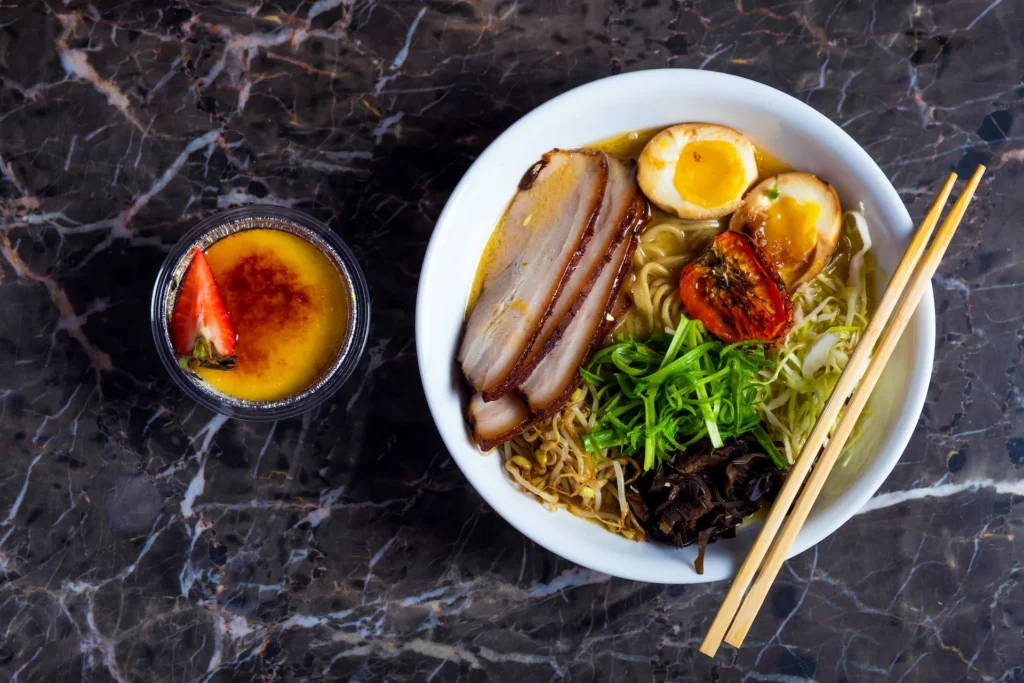
Galbi
Galbi, also known as kalbi, is a Korean dish that consists of marinated beef short ribs. The beef is marinated in a mixture of soy sauce, sugar, sesame oil, and other seasonings, and then grilled or broiled to perfection. This dish is similar to yakiniku in that it also features marinated beef that is grilled, but the flavor profile is quite different.
Bulgogi
Bulgogi is a popular Korean dish that is made with thin slices of beef that are marinated in a sweet and savory sauce before being grilled or pan-fried. The marinade typically consists of soy sauce, sugar, sesame oil, garlic, and other seasonings. While yakiniku also features marinated beef, the preparation and flavor profile of bulgogi is distinct.
Shabu Shabu
Shabu shabu is a Japanese hotpot dish that involves cooking thinly sliced meat, usually beef or pork, and vegetables in a pot of boiling water or broth. The cooked ingredients are then dipped in a sauce before being eaten. While the cooking method is different from yakiniku and Korean BBQ, the focus on meat and the interactive dining experience are similar.
Sukiyaki
Sukiyaki is another Japanese hotpot dish that features thinly sliced beef that is cooked in a sweet and savory broth with vegetables and other ingredients. The cooked ingredients are then dipped in a raw egg before being eaten. While the preparation and presentation of sukiyaki is different from yakiniku and Korean BBQ, the focus on beef and the communal dining experience are similar.
Gogi Gui
Gogi gui is a Korean term that refers to any grilled or roasted meat dish. While Korean BBQ is a type of gogi gui, there are many other variations that feature different cuts of meat and marinades. Like yakiniku, gogi gui is often enjoyed in a social setting where diners cook the meat themselves at the table.

Is Yakiniku only beef, and Korean BBQ only pork?
No, while beef is the primary meat used in Yakiniku, it can also include chicken, pork, and other meats. Similarly, while pork is the primary meat used in Korean BBQ, it can also include beef, chicken, and other meats. Both styles of BBQ offer a range of options for meat lovers.
Do Yakiniku and Korean BBQ use the same marinades?
No, Yakiniku and Korean BBQ use different marinades. Yakiniku marinades typically include soy sauce, sugar, garlic, and sake, while Korean BBQ marinades typically include soy sauce, sesame oil, garlic, and sugar. The difference in marinades gives each style of BBQ its unique flavor profile.
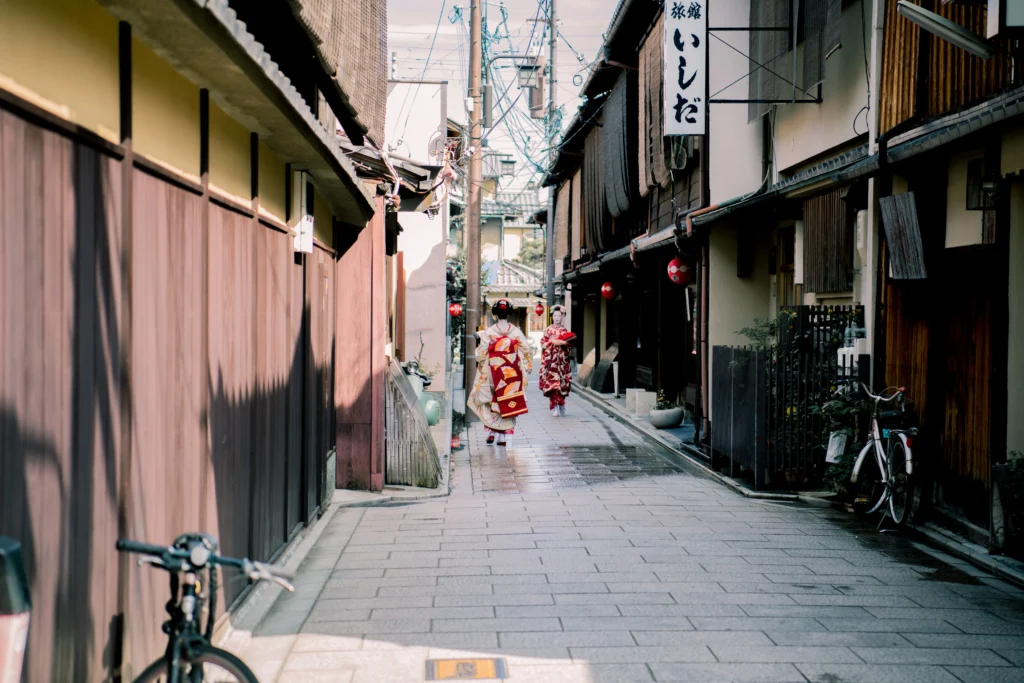
What are some differences in cooking methods between Yakiniku and Korean BBQ?
Yakiniku is often cooked over charcoal, while Korean BBQ is usually cooked on a gas or electric grill. Additionally, Yakiniku is often cooked at the table by the diners themselves, while Korean BBQ is usually cooked by the restaurant staff. Yakiniku also tends to be cooked quickly and at high temperatures, while Korean BBQ is often cooked more slowly.
Can vegetarians enjoy Yakiniku and Korean BBQ?
Yes, vegetarians can enjoy Yakiniku and Korean BBQ. Many Yakiniku and Korean BBQ restaurants offer vegetarian options such as tofu or vegetables that can be grilled. Additionally, Yakiniku and Korean BBQ can be a fun social experience, even for non-meat eaters.

Are there any cultural differences between Yakiniku and Korean BBQ?
Yes, there are some cultural differences between Yakiniku and Korean BBQ. While both styles of BBQ originated in East Asia, Yakiniku is a Japanese dish, while Korean BBQ obviously originated in Korea. Additionally, the dining experience at Yakiniku and Korean BBQ restaurants can be quite different, with Yakiniku often being a more formal affair and Korean BBQ being more casual and communal.

Korean towns in Tokyo and Osaka where you can find delicious Korean BBQ
Shin-Okubo, Tokyo: This area is located just a few minutes away from Shinjuku Station and is commonly known as Tokyo’s Koreatown. The streets are lined with numerous Korean restaurants, supermarkets, and beauty shops, making it a perfect place to experience authentic Korean culture. Shin-Okubo offers a wide range of Korean BBQ options, from traditional charcoal grilling to newer electric grilling methods. It’s a must-visit spot for any Korean BBQ lover.
Tsuruhashi, Osaka: Located in the southern part of Osaka, Tsuruhashi is known as the largest Korean town in Japan. The area is home to many Korean residents, and as a result, there are many Korean supermarkets, shops, and restaurants. The restaurants in Tsuruhashi are famous for their high-quality meat, and the Korean BBQ options are endless. Visitors can enjoy a variety of dishes, from traditional bulgogi and galbi to more modern fusion dishes like cheese dak galbi.
Kita-Senju, Tokyo: Kita-Senju is a popular area in Tokyo that’s well known for its Korean community. The area has many Korean restaurants, shops, and even a Korean-style spa. The Korean BBQ options in Kita-Senju are plentiful and diverse, with options ranging from traditional beef, pork, and chicken dishes to more unique options like marinated duck meat.
Ikuno, Osaka: Located in the central part of Osaka, Ikuno is another popular Korean town in Japan. The area is home to many Korean residents, and as a result, there are numerous Korean restaurants and shops. The Korean BBQ options in Ikuno are also diverse, with many restaurants offering unique and flavorful marinades for their meats. Visitors can enjoy a wide range of dishes, including marinated beef, pork belly, and spicy chicken.
Gotanda, Tokyo: Gotanda is a bustling area in Tokyo that’s home to many Korean restaurants and shops. The area is known for its lively atmosphere and delicious Korean BBQ. Visitors can enjoy a variety of grilled meats, including beef, pork, and chicken, along with traditional Korean side dishes like kimchi and pickled vegetables.

Leave a Reply